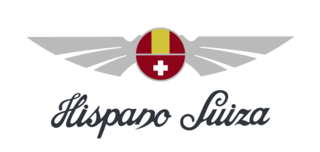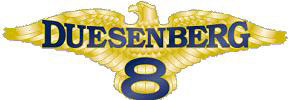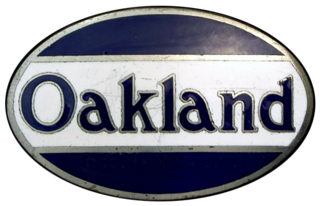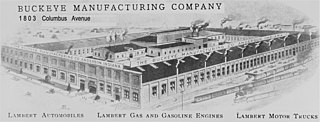
Automobiles Ettore Bugatti was a German then French manufacturer of high-performance automobiles. The company was founded in 1909 in the then-German city of Molsheim, Alsace, by the Italian-born industrial designer Ettore Bugatti. The cars were known for their design beauty and for their many race victories. Famous Bugatti automobiles include the Type 35 Grand Prix cars, the Type 41 "Royale", the Type 57 "Atlantic" and the Type 55 sports car.

Honda Motor Company, Ltd. is a Japanese public multinational conglomerate manufacturer of automobiles, motorcycles, and power equipment, headquartered in Minato, Tokyo, Japan.

Buick or formally the Buick Motor Division of General Motors, is a division of the American automobile manufacturer General Motors (GM). Started by automotive pioneer David Dunbar Buick, it was among the first American marques of automobiles, and was the company that established General Motors in 1908. Before the establishment of General Motors, GM founder William C. Durant had served as Buick's general manager and major investor.

The Cadillac Motor Car Division is a division of the American automobile manufacturer General Motors Company (GM) that designs and builds luxury vehicles. Its major markets are the United States, Canada, and China. Cadillac models are distributed in 34 additional markets worldwide. Cadillac automobiles are at the top of the luxury field within the United States. In 2019, Cadillac sold 390,458 vehicles worldwide, a record for the brand.

The land speed record is the highest speed achieved by a person using a vehicle on land. There is no single body for validation and regulation; in practice the Category C flying start regulations are used, officiated by regional or national organizations under the auspices of the Fédération Internationale de l'Automobile (FIA). The land speed record (LSR) is standardized as the speed over a course of fixed length, averaged over two runs. Two runs are required in opposite directions within one hour, and a new record mark must exceed the previous one by at least one percent to be validated.

Hispano-Suiza is a Spanish automotive–engineering company. It was founded in 1904 as an automobile manufacturer and eventually had several factories in Spain and France that produced luxury cars, aircraft engines, trucks and weapons. In 1923, its French luxury car arm became a semi-autonomous partnership with the Spanish parent company. In 1946, the Spanish parent company sold all of its Spanish automotive assets to Enasa, a Spanish state-owned vehicle manufacturer, and the French arm continued as an independent aviation engine and components manufacturer under the Hispano-Suiza name. In 1968, Hispano-Suiza was taken over by the aerospace company Snecma, which is now part of the French Safran Group. An attempt to relaunch the brand was made by the company Hispano Suiza Cars associated with the Peralada Group in 2019 with a fully-electric car.

The Brass Era is an American term for the early period of automotive manufacturing, named for the prominent brass fittings used during this time for such things as lights and radiators. It is generally considered to encompass 1896 through 1915, a time when these vehicles were often referred to as horseless carriages.
Du Pont Motors was founded by E. Paul du Pont to produce marine engines for the Allied nations during World War I. After the war, Du Pont Motors produced extremely high-end automobiles. The cars were manufactured in Wilmington, Delaware.

A cyclecar was a type of small, lightweight and inexpensive car manufactured in Europe and the United States between 1910 and the early 1920s. The purpose of cyclecars was to fill a gap in the market between the motorcycle and the car. A key characteristic was that it could only accommodate two passengers sitting tandem style or passenger behind the driver.

Duesenberg Automobile and Motors Company, Inc. was an American racing and luxury automobile manufacturer founded in Indianapolis, Indiana by brothers Frederick and August Duesenberg in 1920. The company is known for popularizing the straight-eight engine and four-wheel hydraulic brakes. A Duesenberg car was the first American car to win the 1921 French Grand Prix and Duesenbergs won the Indianapolis 500 in 1924, 1925, and 1927. Transportation executive Errett Lobban Cord acquired the Duesenberg corporation in 1926. The company was sold and dissolved in 1937.

The Oakland Motor Car Company of Pontiac, Michigan, was an American automobile manufacturer and division of General Motors. Purchased by General Motors in 1909, the company continued to produce modestly priced automobiles until 1931 when the brand was dropped in favor of the division's Pontiac make.

Development of the automobile started in 1672 with the invention of the first steam-powered vehicle, which led to the creation of the first steam-powered automobile capable of human transportation, built by Nicolas-Joseph Cugnot in 1769. Inventors began to branch out at the start of the 19th century, creating the de Rivas engine, one of the first internal combustion engines, and an early electric motor. Samuel Brown later tested the first industrially applied internal combustion engine in 1826.

Industrias Kaiser Argentina S.A. was an Argentine automobile manufacturer established in 1956 as a joint venture with Kaiser Motors of the United States. Headquartered in Santa Isabel, Córdoba, the automaker produced a variety of Kaiser Jeep vehicles and American Motors Corporation (AMC) models, including Argentina's most iconic car, the Torino, before partnering with France's Renault, which bought it out in 1970.

Shelby American, Inc. is an American high performance vehicle manufacturer founded by former race car driver Carroll Shelby. The Shelby American name has been used by several legally distinct corporations founded by Shelby since his original shop in Venice, California began operation in 1962. The current iteration is a wholly owned subsidiary of Carroll Shelby International, Inc., a holding company formed in 2003. Carroll Shelby International's other wholly owned subsidiary is Carroll Shelby Licensing, which licenses the name and trademarks associated with Shelby to other companies. Shelby American was the first automobile manufacturer in the state of Nevada. Shelby American manufactures component automobiles, including replicas of the small-block and large-block AC Cobras, the Shelby GT350 and the GT500 Super Snake. Since 2005, Shelby American has released new models each year.

A car is a wheeled motor vehicle used for transportation. Most definitions of cars say that they run primarily on roads, seat one to eight people, have four wheels, and mainly transport people rather than goods.

The Buckeye Manufacturing Company was a company founded in 1884 by John William Lambert and his family members originally to manufacture horse drawn buggy parts in Union City, Ohio. The enterprise started with $2,000 and six men and some helper boys. The company got involved in making tools and one early horseless carriage automobile.

The Dodge Viper is the first generation of the Viper sports car, manufactured by American automobile manufacturer Dodge. It was originally tested in January 1989 as a prototype, then later introduced in 1991 as a pace car for the Indianapolis 500, then finally going on sale in January 1992.

Dart was a manufacturer of commercial vehicles in Waterloo, Iowa, that was established around 1910.